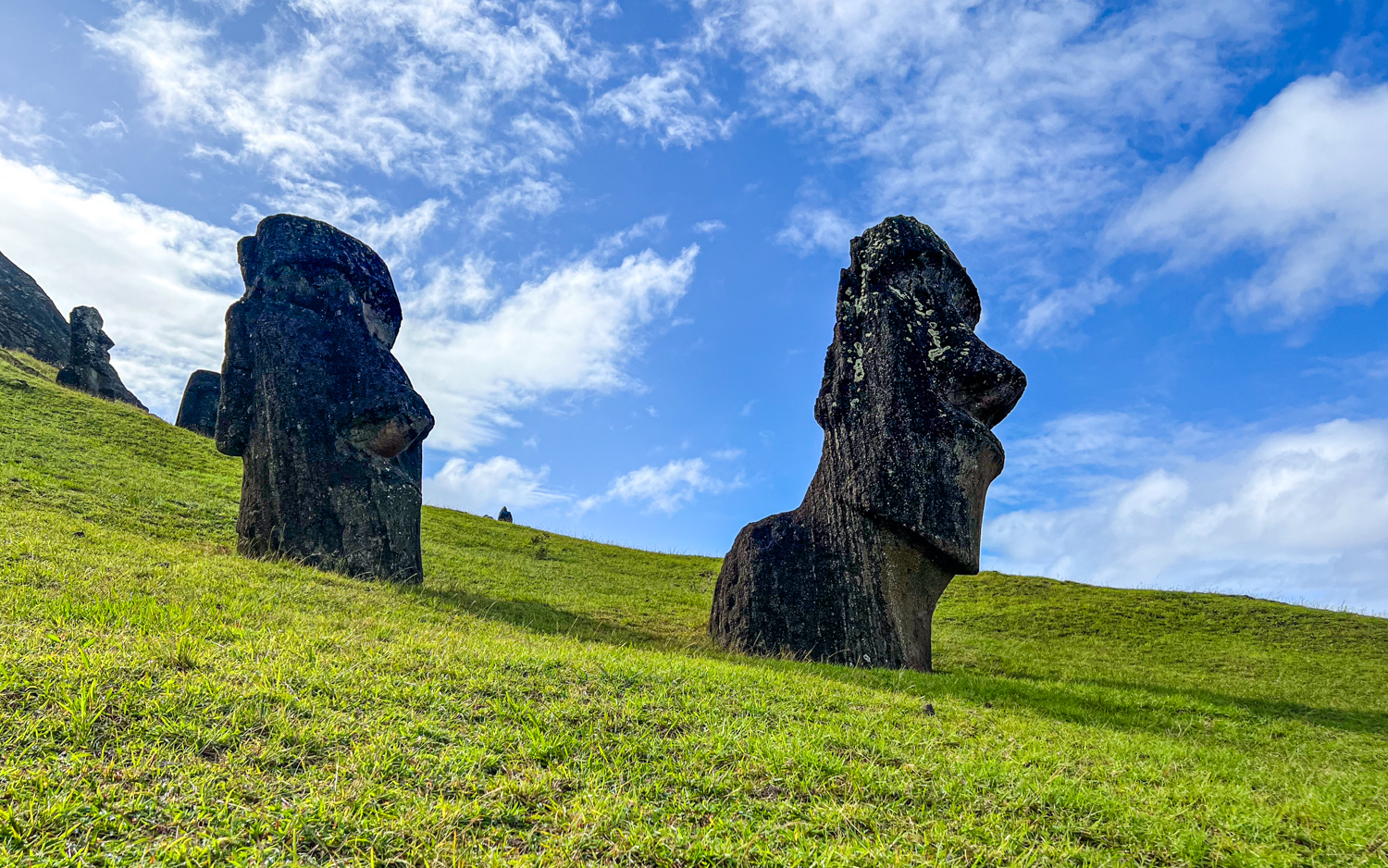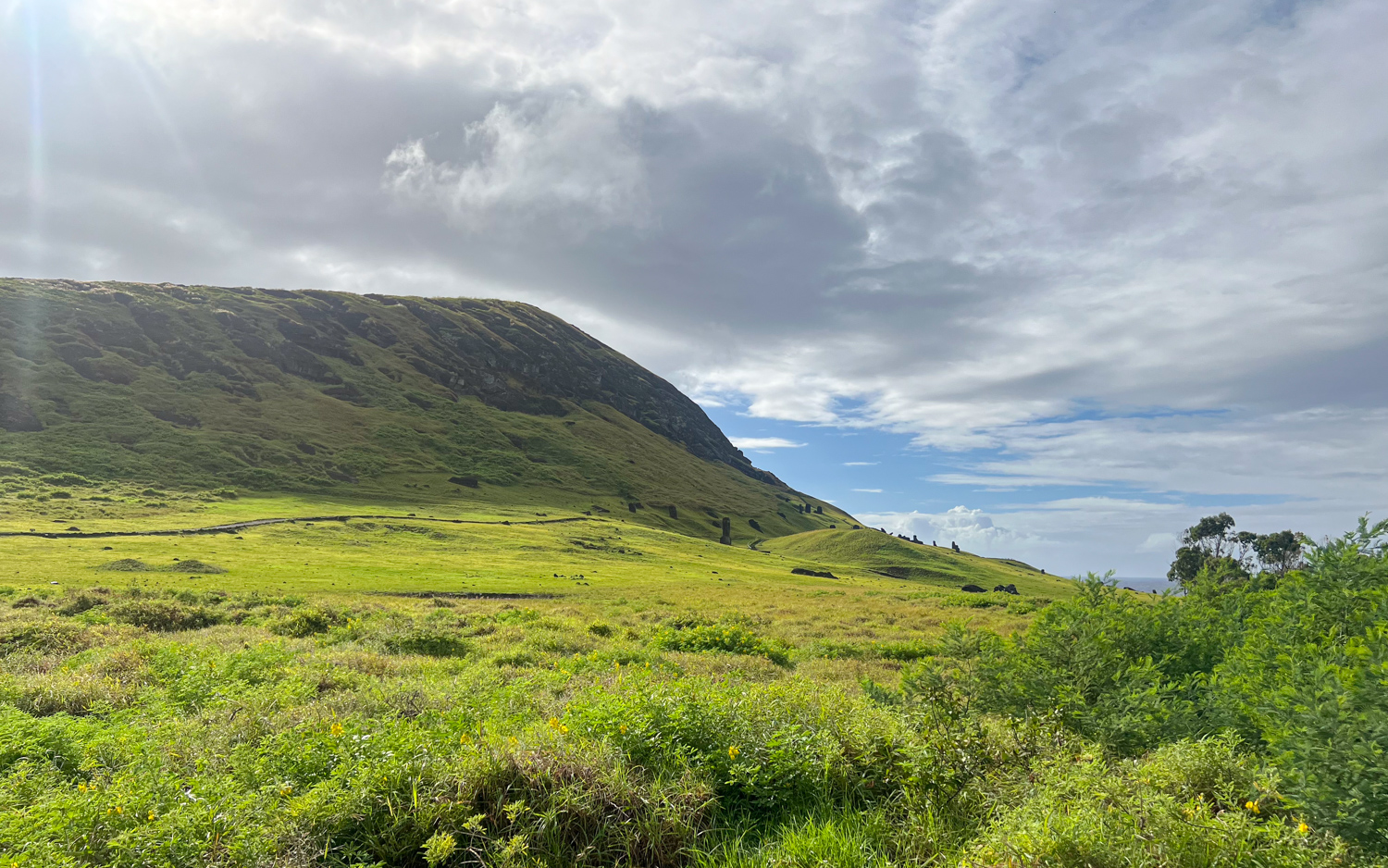Five hundred years ago, on the southern slopes of Easter Island’s Rano Raraku volcano, the Rapa Nui people skillfully carved monumental moai statues from volcanic rock.
The quarry was more than just a workplace. It was also a spiritually significant site. The moai are thought to represent the ancestors of the Rapa Nui people, embodying the spirits of their ancestors.
Approximately one thousand statues were produced between the 12th and 15th centuries, most of which were transported around the island’s coastline at places like Ahu Tongariki and the Tahai Ceremonial Complex. Still, about 400 moai remain in the quarry in various stages of completion.
Today, visitors with a Rapa Nui National Park pass and a registered guide can walk among the stone faces of Rano Raraku and see evidence of how the moai were produced. This is precisely how Kel and I spent our first morning on Easter Island.

After a brief breakfast in Hanga Roa, we walked to the Mahinatur office we’d encountered on our initial stroll through town a day earlier. We’d reserved a spot on a full-day group tour that included visits to Rano Raraku, Ahu Tongariki, Ahu Akahanga, and Anakena Beach. The cost was 60,000 Chilean pesos or about $30 per person (80,000 pesos / $40 with lunch).
We paid for the tours by credit card and met our multilingual local guide, Luis, and five other tourists. Departure was at 9:30 a.m., as scheduled, and it was raining. Travelers to Easter Island can only visit Rano Raraku once during their stay. We were nervous we’d committed our one opportunity to see it to a morning when the weather was conspiring against us.
Arriving at Rano Raraku


The 12-mile drive from Hanga Roa to the entrance of Rano Raraku at the eastern end of the island took about 45 minutes. Thankfully, the rain had let up when we reached the gate, and the sun had begun peeking through the grey clouds above the volcano.
Each visitor had to show their Rapa Nui National Park pass, which was then stamped along with their passport. These park passes must be purchased in advance (either in town at the tourism office or online).
Before we entered the site, Luis showed us samples of the various materials used by the Rapa Nui workers to create the moai on Easter Island:
- Tuff is a soft, porous grey rock made from compressed volcanic ash used to make the moai.
- Hawaiite (basalt), the hardest rock on Easter Island,…
Click Here to Read the Full Original Article at GoBackpacking…